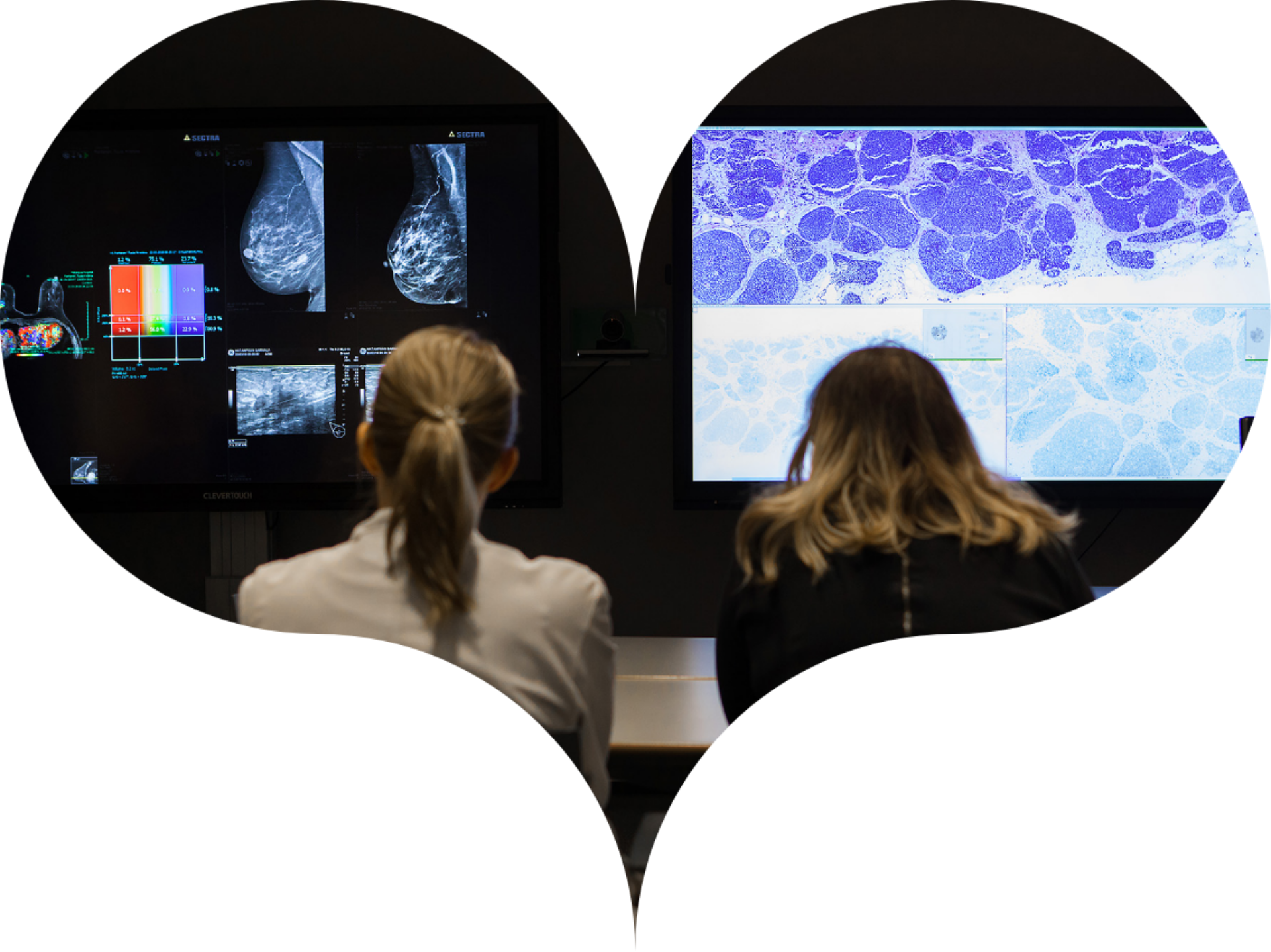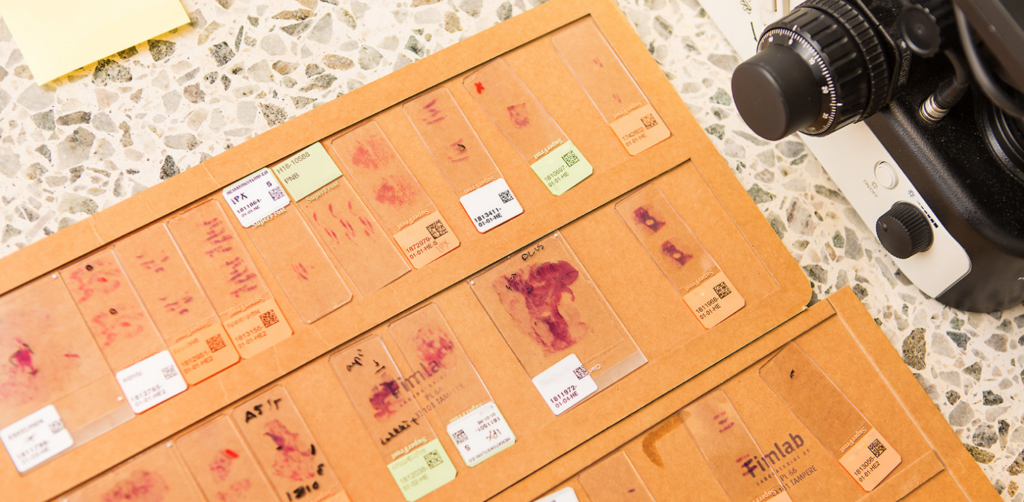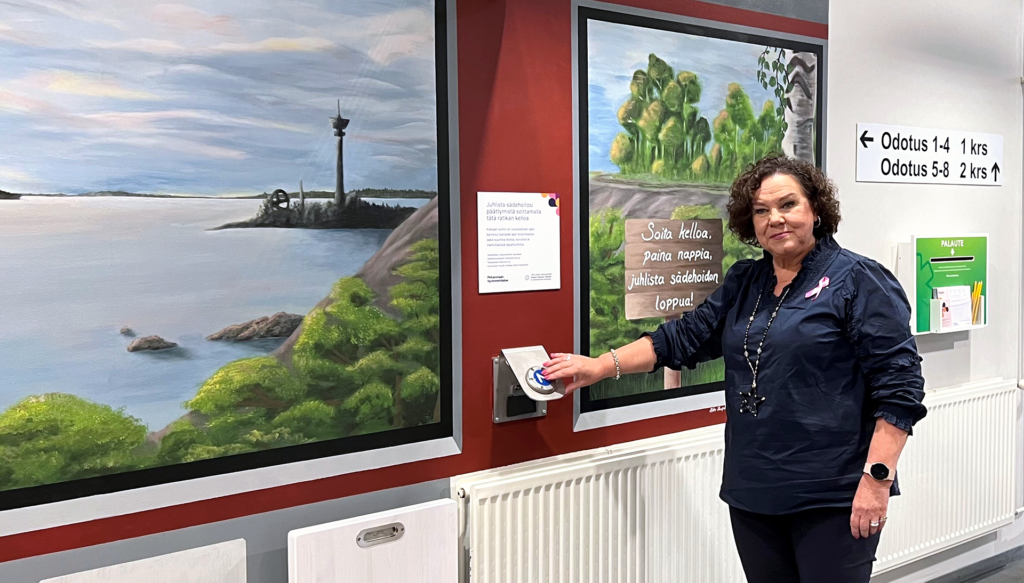
Breast cancer is one of the most common types of cancer – nurses play a significant role in the treatment path
In the wellbeing services county of Pirkanmaa, approximately 600 cases of breast cancer are diagnosed each year. In addition to the related procedures, resurgeries and corrective surgeries are performed. Breast cancer surgery was centralized at Hatanpää Hospital in autumn 2016.
“Combining the two units demanded some exercise, but the operations got off to a great start. When the Cancer Centre was launched, we had already established good practices. That’s when we put into words treatment pathways that describe breast cancer treatment from the perspective of both professionals and patients,” says Ulla Karhunen-Enckell, a plastic surgeon specializing in breast cancer surgery and reconstructions performed during surgeries.
As this is a common cancer, treatment involves many medical professionals. In addition, the national breast cancer treatment recommendation is changing rapidly. For this reason, according to Karhunen-Enckell, it is important that the instructions for professionals are accurately described on the internal website, i.e. the intranet.
“It’s important for orientation. The patient’s treatment path and patient instructions for breast cancer were also among the first to be collected in one place on a public website.
Breast cancer surgery employs two full-time breast nurses. Karhunen-Enckell describes their role as significant.
“When a referral is made from outpatient care, the nurses’ phone starts ringing. They also contact patients after the referral has been processed by the surgeon. Often it happens on the same day as the referral.
Nurses take the patient forward on the treatment path.
“If no further examinations are needed, the case is taken to a multidisciplinary treatment meeting, i.e. MDT meeting, to prepare a treatment recommendation, after which the nurse calls the patient. If examinations are needed, the nurse will go through the related questions with the patient. The nurse will also tell you about the possibilities of psychosocial support. Before the operation, the pre-visit nurse interviews the patient, and after the operation, the recovery room nurse gives the necessary instructions, Karhunen-Enckell lists.
The nurses are also accompanied by the surgeon at the puncture clinic, where fluid deposits formed after the operation are treated and punctures may also be performed independently at some point.

Hopes of overcoming logistics challenges
The majority of breast cancer patients undergoing surgery on Hatanpää also require a nuclear medicine injection for sentinel lymph node examination. However, this can only be given at the main campus of Tays.
“Injections start at seven o’clock in the morning and operations start at eight. This causes costs and logistical challenges for the patient, especially since the walking distance in the main house can be 800 meters each way. There is still some orienteering to be done here in Hatanpää, Karhunen–Enckell describes.
In addition to nuclear medicine, the pathology department is also located in the main building.
“Samples from the operating theatre in Hatanpää are delivered to the main house. If results are needed during surgery, we wait for transportation and analysis, which may take an extra hour. These are the kinds of issues to be solved in the future. Hopefully, at some point, we will be able to centralize operations under the same roof.
New technology in surgical site marking and radiotherapy
Technological development and investments streamline the work of professionals and make patients’ lives easier. In autumn 2023, a new marking technique related to breast cancer surgery sites was introduced for routine use at Tays. The marking has previously been done with metal wire and must have been done on the morning of the operation. Now, after trials and pilots, the so-called radioactive grain has been taken into use.
“The grain can be placed under the skin up to a couple of weeks before surgery, so it makes logistics easier. It is also more comfortable and sterile for the patient. However, the commissioning took more than five years due to the intricacies of the Radiation Act, Karhunen–Enckell says.

The radiotherapy unit has a bell to celebrate the end of the treatment period. The bell was set up in a warm and emotional event on October 10, 2023. Mervi Käki, a patient who ended her radiotherapy period, started using the bell for the first time.
Adjuvant radiotherapy to the breast or thoracic region often complements local treatment after breast cancer surgery. The treatment period typically lasts three weeks, during which the patient visits the radiotherapy unit every weekday. According to Bärlund, the planning of radiotherapy includes many different stages before radiotherapy itself can begin. First, the patient is scanned in the radiotherapy unit using computed tomography.
“Imaging is a bit like a doctor taking measurements of a patient. This way we can see where the contours of the body go. Based on this, the doctor plans at what dose radiation therapy will be carried out and at what point it will be targeted. Only then does the technical dose planning of radiotherapy begin, in which an important part is the protection of areas outside the target area of radiotherapy, such as the heart and lungs, from radiation.
Previously, radiation therapy was targeted with marks tattooed on the chest.
“Many patients have seen this as a stigmatizing and unpleasant reminder of cancer. In autumn 2023, we introduced a new radiotherapy machine, the technology of which allows the treatment to be targeted according to the surface of the skin and tattoos were abandoned. It is a significant development from the perspective of breast cancer patients,” says Maarit Bärlund, Chief Physician of the Oncology Division.
Read more
The end stop of radiotherapy with bells was opened for use at Tays Central Hospital
The work approach project assesses the need for sick leave individually
The Work Approach project is a tailoring model for sick leave developed by the Finnish Institute of Occupational Health, which originally originated from joint replacement surgery. The model has been tested in the Pirha region for the first time with breast cancer patients, for a couple of years now. The aim is to make the model a nationwide operating model.
The idea behind the work approach project is that only a certain amount of sick leave is written at specialized medical care for a certain operation. In breast cancer, it is two weeks. After this, the occupational health care, which knows the patient’s job description, takes care of the matter and continues sick leave if necessary. Tays is contacted by occupational health services already at the treatment planning stage so that they can prepare to receive the patient at the right time.